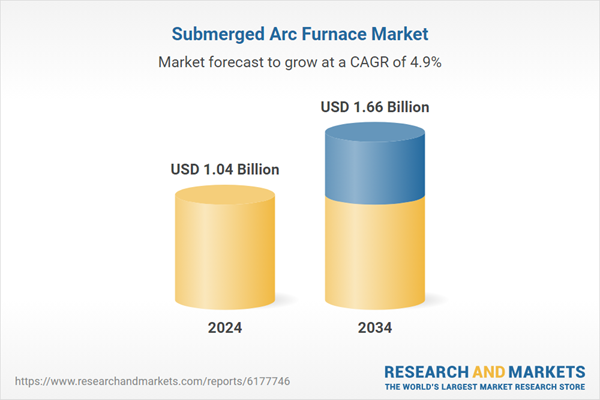The surge in demand for submerged arc furnaces is closely tied to the global rise in steel, ferroalloy, and silicon metal production. As industrialization and urban development accelerate across emerging markets, the need for high-grade steel products continues to intensify. Submerged arc furnaces play a central role in steel manufacturing, especially in producing ferroalloys that serve as critical inputs during steelmaking processes. Growing infrastructure activity, automotive manufacturing, and the expansion of the construction sector further amplify this need. Additionally, the push for renewable energy has sparked greater demand for silicon metal used in solar panels and electronics. As silicon metal production is energy-intensive, modern SAF designs are proving vital in improving efficiency and productivity. Increasing applications across multiple sectors, coupled with innovation in furnace technologies, are fueling the market's upward trajectory. With steel and silicon remaining foundational materials in the global economy, submerged arc furnace adoption continues to expand, making it a key technology investment for manufacturing operations worldwide.
The AC submerged arc furnaces segment generated USD 747.7 million in 2024 and is forecast to grow at a CAGR of 5.1% through 2034. These furnaces maintain the top spot due to their cost efficiency, mature technology base, and ease of use in industrial settings. AC-SAF systems are commonly chosen in silicon metal and ferroalloy production due to their operational reliability and compatibility with high-temperature processes. They provide consistent results while keeping capital costs manageable, making them highly attractive for large-scale industrial use.
The ferroalloy applications segment held a 38% share in 2024 and is projected to grow at a CAGR of 5% from 2025 to 2034. Among all uses of submerged arc furnaces, ferroalloy manufacturing remains the dominant driver of demand. These specialized alloys, such as ferrosilicon, ferrochrome, and ferromanganese, are essential in steel production, requiring consistent high-heat environments that only SAFs can reliably provide. The need for quality steel outputs and metallurgical precision continues to push the demand for this application across global markets.
U.S. Submerged Arc Furnace Market held a 76% share in 2024, generating USD 208.8 million. The country's leadership position is backed by its robust steel and metal production base, supported by growing investments in facility upgrades and technological improvements. SAFs are widely deployed in producing critical metals used in core industries like infrastructure, transportation, and manufacturing. Ongoing modernization efforts aimed at boosting output and energy efficiency further contribute to increased SAF adoption.
Key players shaping the Global Submerged Arc Furnace Market include Shanghai Electric, Outotec Oyj, Tenova, Xi’an Abundance Electric Technology, SMS Group, Thermtronix, Paul Wurth, Thyssenkrupp Industrial, Electrotherm, Siemens, Hatch, Metso Outotec, Primetals Technologies, Danieli, and Doshi Technologies. These companies continue to lead innovation and technological integration across major industrial furnace applications worldwide. To maintain and expand their footprint, companies in the submerged arc furnace space are prioritizing R&D to enhance energy efficiency, furnace automation, and digital monitoring. Technological upgrades are focused on minimizing downtime and extending equipment lifespan, while also optimizing high-temperature performance.
Comprehensive Market Analysis and Forecast
- Industry trends, key growth drivers, challenges, future opportunities, and regulatory landscape
- Competitive landscape with Porter’s Five Forces and PESTEL analysis
- Market size, segmentation, and regional forecasts
- In-depth company profiles, business strategies, financial insights, and SWOT analysis
This product will be delivered within 2-4 business days.
Table of Contents
Companies Mentioned
The companies profiled in this Submerged Arc Furnace market report include:- Danieli
- Doshi Technologies
- Electrotherm
- Hatch
- Metso Outotec
- Outotec Oyj
- Paul Wurth
- Primetals Technologies
- Shanghai Electric
- Siemens
- SMS Group
- Tenova
- Thermtronix
- Thyssenkrupp Industrial
- Xi’an Abundance Electric Technology
Table Information
| Report Attribute | Details |
|---|---|
| No. of Pages | 220 |
| Published | September 2025 |
| Forecast Period | 2024 - 2034 |
| Estimated Market Value ( USD | $ 1.04 Billion |
| Forecasted Market Value ( USD | $ 1.66 Billion |
| Compound Annual Growth Rate | 4.9% |
| Regions Covered | Global |
| No. of Companies Mentioned | 16 |









